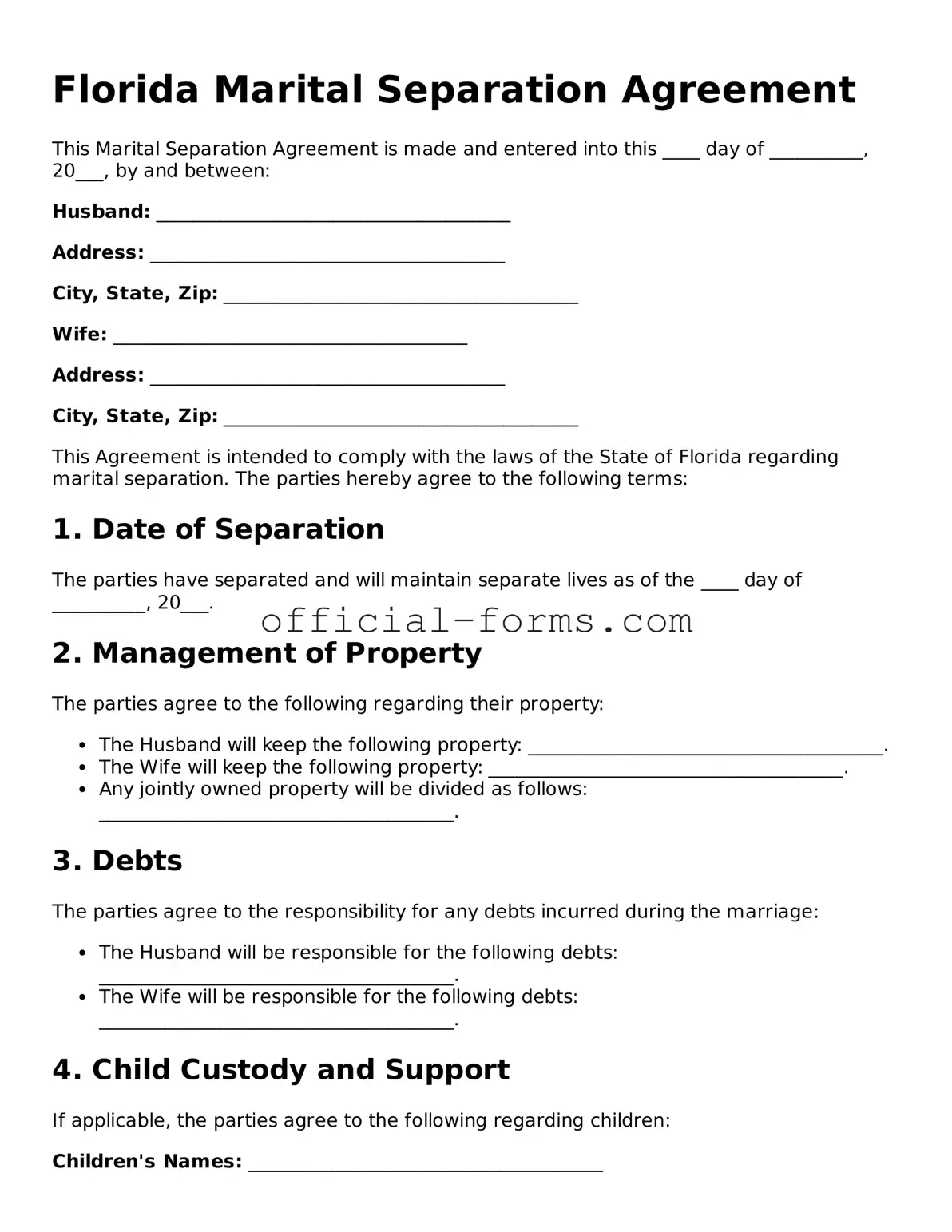Official Florida Marital Separation Agreement Document
A Florida Marital Separation Agreement form is a legal document that outlines the terms of separation between spouses who choose to live apart without formally divorcing. This agreement addresses various aspects of the separation, such as property division, child custody, and financial responsibilities. By clearly defining these terms, couples can minimize conflicts and establish a framework for their new living arrangements.
Open My Marital Separation Agreement Now
